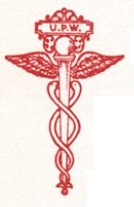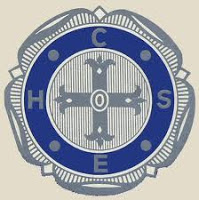Related Research Articles
The National and Local Government Officers' Association was a British trade union representing mostly local government "white collar" workers. It was formed in 1905 as the National Association of Local Government Officers, and changed its full name in 1952 while retaining its widely used acronym, NALGO. By the late 1970s it was the largest British white collar trade union, with over 700,000 members. It was one of three unions which combined to form UNISON in 1993.

The National Union of Public Employees (NUPE) was a British trade union which existed between 1908 and 1993. It represented public sector workers in local government, the Health Service, universities, and water authorities.

The Association of Scientific, Technical and Managerial Staffs (ASTMS) was a British trade union which existed between 1969 and 1988.

The Union of Communication Workers (UCW) was a trade union in the United Kingdom for workers in the post office and telecommunications industries.
The Altogether Builders' Labourers and Constructional Workers' Society was a trade union representing labourers in the construction industry in the United Kingdom.
The Municipal Employees' Association was a trade union representing local government workers in the United Kingdom.

The Confederation of Health Service Employees (COHSE) was a United Kingdom trade union representing workers primarily in the National Health Service.
The Amalgamated Association of Beamers, Twisters and Drawers (AABTD) was a British trade union which existed between 1866 and 2002. It represented skilled workers in the cotton industry who were responsible for preparing warp yarns prior to weaving.
The General Union of Loom Overlookers (GULO) was a trade union representing junior supervisors in textile manufacturing in the United Kingdom. While most members were based in Lancashire, it also had members in Yorkshire, East Anglia and Essex.
The Amalgamated Textile Warehousemen's Association was a trade union representing workers in the textile industry in the United Kingdom, principally in Lancashire.
The National Union of Wallcoverings, Decorative and Allied Trades (NUWDAT) was an industrial union representing workers connected with the manufacture of wallpaper in the United Kingdom.
The Communication Managers' Association (CMA) was a trade union representing managers in the United Kingdom, principally those working for the Post Office.
The Association of Government Supervisors and Radio Officers (AGSRO) was a trade union representing supervisors in the British civil service.
The General Union of Lancashire and Yorkshire Warp Dressers' Association was a trade union representing workers involved in preparing warp yarn for weaving who were based in northern England.
The National Cutlery Union was a trade union representing workers involved in the manufacture of cutlery in the United Kingdom, particularly in Sheffield.
The Prudential Staff Union was a trade union representing workers at the Prudential insurance company, in the United Kingdom. The only union of insurance workers to affiliate to the Labour Party, it was briefly represented on its National Executive Committee, and for a time sponsored a Member of Parliament.
The Scottish Lace and Textile Workers' Union was a trade union representing textile workers in Scotland.
Managerial and Professional Officers (MPO) was a trade union representing senior staff working for local authorities in the United Kingdom.
The Lancashire Amalgamated Tape Sizers' Friendly Society was a trade union representing workers involved in the preparation of cotton in the Lancashire area of England.
The National Woolsorters' Society (NWS) was a trade union representing workers involved in sorting wool in the United Kingdom, principally in Yorkshire.
References
- 1 2 3 Marsh, Arthur; Smethurst, John B. (2006). Historical Directory of Trade Unions . Vol. 5. Routledge. ISBN 085967990X.
- 1 2 3 Marsh, Arthur (1984). Trade Union Handbook (3 ed.). Aldershot: Gower. p. 206. ISBN 0566024268.
- ↑ Waddington, Jeremy; Kahmann, Marcus; Hoffmann, Jurgen (2005). A Comparison of the Merger Process in Britain and Germany: Joining Forces?. Routledge. p. 57. ISBN 9780415353786.
- ↑ "The British merger movement", Industrial Relations Journal, Vol.30, No.5